MusicRadar Verdict
The PST 5 range contains a wide selection of sympathetically tuned cymbals to choose from and has the advantage of being made from the 2002 bronze alloy. The PST 3 range offers correspondingly useable sounds along with outstanding value for money. Consistency is the key to producing successful cymbals at this level, and Paiste has always been a byword for consistency.
Pros
- +
Quality, value, wide range of models.
Cons
- -
No savings if you buy a bundled pack.
MusicRadar's got your back
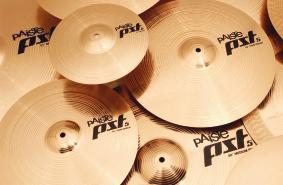
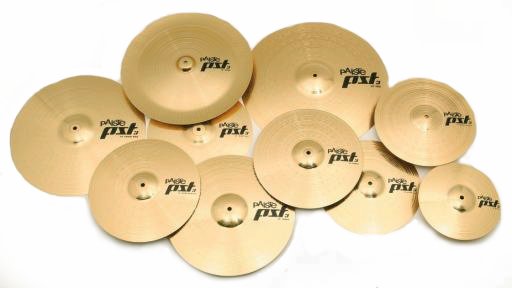
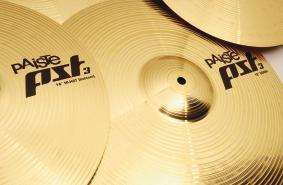

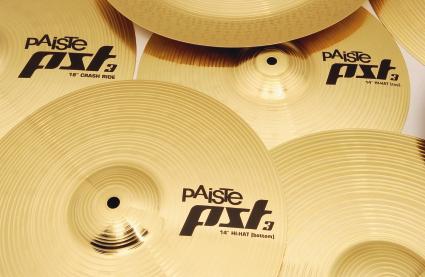
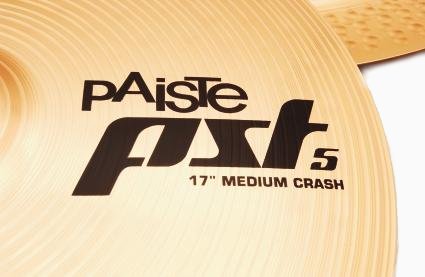
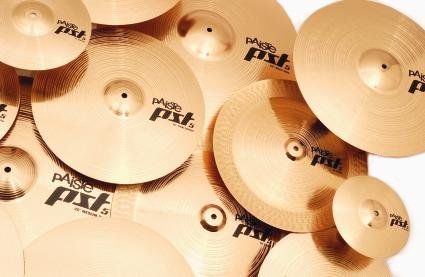
Swiss cymbalsmith company Paiste produces a mind-boggling array of pro-level cymbals to cover just about every musical genre. The company also endeavours to provide a similar (if not equal) spectrum of sizes and weights a little further down the food chain. This is the case for its all-new PST ranges, which have been designed to offer younger, less experienced, or simply cash-strapped players a broad palette of cymbals from which to choose.
These include different thicknesses and a good selection of sizes, including odd-number diameters, a feature that is rarely found in budget territory. PST stands for Paiste Sound Technology, which is fitting, as Paiste has always embraced hi-tech production methods with enthusiasm. The production of the new ranges is undertaken at Paiste's factory in Germany.
The company claims that new digital technology has enabled it to improve standards in sound quality and appearance at this end of the market. All of Paiste's manufacturing knowledge and sound concepts, not to say legendary reputation for consistency, seem to have travelled well.
All change
The PST range is split into two lines, numbered simply PST 3 and PST 5. The two sets replace Paiste's 302, 502 and 802 ranges. As with the previous ranges, the new PST lines are budget rather than beginners' cymbals, sitting above Paiste's entry-level 101 and 201 series.
The PST 5 cymbals are easily distinguishable from their PST 3 siblings by virtue of their reddish-brown (as opposed to yellowish) colour. This is due to the fact that they are made from the same bronze alloy as Paiste's classic 2002 cymbals. It would also explain the contrast in the prices of the two ranges.
When comparing the PST 5 cymbals with a genuine 2002 cymbal, we found that the colours didn't quite match perfectly, although we were comparing a fairly stick-marked, road-weary example to a new, unblemished cymbal. There are also manufacturing distinctions between the two that could well throw up different nuances in colour.
Whereas 2002 cymbals are cast individually and then beaten from a raw ingot into cymbals, the PST cymbals are cut from sheets of the 2002 alloy, then worked. A familiar trait of all budget cymbals is that they are only available in the most popular sizes. The PST 5 range does not revert to type here, offering the sort of choice that you would expect to find a little further up the price ladder.
Among the cymbals are 10 crashes, three pairs of hi-hats and four ride cymbals, as well as a pair each of chinas and splashes. The cymbals are separated by weight as well as diameter, particularly in the crashes.
All the PST 5 cymbals have been fashioned and tuned in a roughly comparable manner. Regular hammering patterns are more visible from below, while on top, widely spaced grooves of lathing score into a bed of tighter and shallower banding.
The Rock models differ slightly in that the deeper lathing stops short of the bell. The chinas meanwhile, bear intense lathing on both sides up to the curve of the lip, at which point similarly concentrated hammering takes over.
Gimme five
Hi-hats are generally the most important and expressive of all cymbals and tend to set the tone of a range, so that's where we began. First out of the box was a pair of 13" Medium hats. They immediately conjured up a clean, bright, typically Paiste sound, which was pleasing. There is an impressive depth to them that belies their budget status.
The 14" Medium hats that followed were a little deeper and warmer, but otherwise displayed the same sort of sonic characteristics as the 13" pair. They give a good chunky crunch when closed and open up nicely to a wash.
Moving onto the heavier 14" Rock hats things get a bit louder. Their extra weight imparts to them a more strident nature that would suit a high volume rock setting. Their higher note gives them an aggressive edge compared to the 14" Medium hats and they are certainly capable of cutting through.
The crashes range from 14" to 19" in diameter and fall into three classifications: Thin, Medium and Rock. Not all of the thicknesses are available in all of the diameters. Thin models come in at 14", 16" and 18", Mediums at 16", 17" and 18", while the Rock crashes are found in 16", 18" and 19" diameters. An 18" crash/ride is the sole example of a classic dual-purpose cymbal.
As a rule, 14" crashes tend to be on the splashy side of crash due to their minimal dimensions, often sounding like a hybrid of the two. The 14" Thin crash fits that description rather neatly, offering a brightness that departs as rapidly as it arrives. The 16" Thin crash has a bit more body to it and decays tidily with the minimum of overtones.
The 18" Thin crash is by far the best of the three. It generates a decent level of volume and the balance of opening crash and underpinning note is just right.
The three Medium crashes all sit well together. They are more assertive in both tone and volume than the Thin models. Our favourite was the 17", for its ability to punch through sweetly without sounding too toppy or overly loud.
Things get heavier still with the Rock crashes. They sacrifice some tonal niceties in favour of power, opening explosively and taking longer to decay. The 16" and 18" models are both forceful, but the 19" is, unsurprisingly, the loudest of all. It remains controllable, though, and its large bell can be ridden very well.
We found it more successful as a crash/ride than the official 18" crash/ride, preferring both its note and overall playabilty.
Hitchin' a ride
The four ride cymbals are available in three diameters; 20", 21" and 22". The 20" Medium ride feels fairly heavy and gives a high-pitched but well defined ping over a clean wash. At 21", the Groove ride is an interesting and increasingly popular size. It performs strongly, and gives a good variety of sounds and textures over the cymbal, from the edge up to the bell.
There are two different-sized Rock rides available; a 20" and 22". The 20" Rock ride is bright but has a real focus to its sound. It produces an insistent ping on the body that gets more forthright as you move onto the bell. The 22" Rock ride is quite a beast, but has great presence. It is big and loud enough to be heard in high volume scenarios, even when played gently, and the bell can be accurately described as commanding.
The two chinas come to life instantly with a trashy eruption, beneath which sits a contrastingly dry note. The 16" cymbal is quite fizzy while the 18" is altogether darker. Of the two splashes, the 10" is the more palatable. The 8" is jarred by an intruding note that distracts from its main purpose.
Three's company
The PST 3 cymbals are made in much in the same way as the PST 5 models, but from a brass/copper alloy, which accounts for their yellowish appearance. Though they lack the more refined look of the PST 5 cymbals, they actually turn in impressive performances across the board. They are surprisingly mellow and even a touch complex in comparison with the rich-sounding PST 5 series.
All of the models are thoroughly useable, with the 14" hi-hats, 18" crash, 20" ride and 18" china being of particular note. Their giveaway colour could be considered disadvantageous, but considering their meagre price tags, these cymbals offer great sounds and superb value.
Where starter cymbals can get away with being round and vaguely bronze-like, budget cymbals are an altogether more demanding proposition. They need to be a good deal more sophisticated and represent the core qualities of the company's higher ranges, while at the same time remaining affordable. In the PST 3 and 5 ranges, Paiste has managed to accomplish this with apparent ease.
The cymbals reflect Paiste's ingrained sound values and distinctive timbre and have been made with the sort of fastidious care that you have come to expect.
MusicRadar is the number 1 website for music makers of all kinds, be they guitarists, drummers, keyboard players, djs or producers...
GEAR: We help musicians find the best gear with top-ranking gear round-ups and high- quality, authoritative reviews by a wide team of highly experienced experts.
TIPS: We also provide tuition, from bite-sized tips to advanced work-outs and guidance from recognised musicians and stars.
STARS: We talk to musicians and stars about their creative processes, and the nuts and bolts of their gear and technique. We give fans an insight into the actual craft of music making that no other music website can.
“A synthesizer that is both easy to use and fun to play whilst maintaining a decent degree of programming depth and flexibility”: PWM Mantis review
“I feel like that song had everything we needed to come back with”: Bring Me The Horizon’s Lee Malia on Shadow Moses, its riff and the secrets behind its tone, and why it was the right anthem at the right time
“I said, ‘Are we sure we can write a song about death?’”: The story of Mike + The Mechanics' classic No.1 The Living Years










